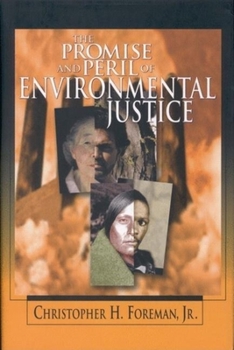The Promise and Peril of Environmental Justice
Select Format
Select Condition 
Book Overview
Are we environmentally victimizing, perhaps even poisoning, our minority and low-income citizens? Proponents of ""environmental justice"" assert that environmental decisionmaking pays insufficient heed to the interests of those citizens, disproportionately burdens their neighborhoods with hazardous toxins, and perpetuates an insidious ""environmental racism."" In the first book-length critique of environmental justice advocacy, Christopher Foreman argues that it has cleared significant political hurdles but displays substantial limitations and drawbacks. Activism has yielded a presidential executive order, management reforms at the Environmental Protection Agency, and numerous local political victories. Yet the environmental justice movement is structurally and ideologically unable to generate a focused policy agenda. The movement refuses to confront the need for environmental priorities and trade-offs, politically inconvenient facts about environmental health risks, and the limits of an environmental approach to social justice. Ironically, environmental justice advocacy may also threaten the very constituencies it aspires to serve--distracting attention from the many significant health hazards challenging minority and disadvantaged populations. Foreman recommends specific institutional reforms intended to recast the national dialogue about the stakes of these populations in environmental protection.
"





